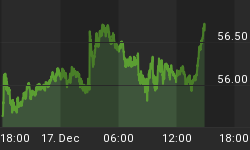3 They began saying to each other, "Let's make bricks and harden them with fire." (In this region bricks were used instead of stone, and tar was used for mortar.) 4 Then they said, "Come, let's build a great city for ourselves with a tower that reaches into the sky. This will make us famous and keep us from being scattered all over the world.
- Genesis 11: 3-4 -
New Living Translation
On September 13th, 2007, the Associated Press reported...
The world's tallest building, still under construction in the booming Gulf emirate of Dubai, has become the world's tallest free-standing structure, its developers said on Thursday...The developer announced in July that Burj Dubai, Arabic for "Dubai Tower", had exceeded Taiwan's Taipei 101 which is 508 metres tall, to become the tallest building in the world.
When I read about the Burj Dubai, an unsettling feeling came over me. I don't remember when or where, but at some point in my life I recall being told that economic calamity soon followed the construction of a new "world's tallest tower".
I was anxious to determine if there was truly a relationship between the construction of "towers" and market peaks, so I pulled up the ever-so-handy Wikipedia to do a little homework. Wikipedia was enormously helpful because with every building on the list it also listed the buildings that it surpassed and was proceeded by in height. Here is the link to the Empire State Building page. (I figured you could start in the middle and work your way in either direction.)
Let's take a look at how the stock market performed after the construction of a new "world's tallest tower". (I didn't include communications towers or tourist structures such as the Eiffel Tower, the Tokyo Tower or the CN Tower. Also, I didn't include the Petronas Twin Towers in Malaysia because only the Antenna was taller than the Sears Tower - not the roof.)
| Building | Years Built | Height | Stock Bear Mrkt | Stock Mrkt Returns* |
| Metlife | 1893 - 1909 | 50 Floors | N/A | N/A |
| Woolworth | 1910 - 1913 | 55 Floors | 1911 - 1913 | - 15% |
| 40 Wall Street | 1929 - 1930 | 282.5m | 1929 - 1932 | - 82% |
| Chrysler Building | 1928 - 1930 | 282m/274m | 1929 - 1932 | - 82% |
| Empire State Building | 1929 - 1931 | 381m | 1929 - 1932 | - 82% |
| World Trade Center | 1966 - 1973 | 417m/413m | 1966 - 1974 | - 44% |
| Sears Tower | 1970 - 1974 | 442m/412m | 1972 - 1974 | - 41% |
| Taipai 101 | 1999 - 2004 | 449.2m/439.2m | 2000 - 2003 | - 48% |
| Burj Dubai | 2004 - 2009 | 555m | '07 - TBD | TBD |
What I found remarkable was just how well the "Tower" indicator predicted secular bear markets in stocks. I was surprised to discover that not a single building taller than the Empire State Building was built during the nearly 40 years between the two secular bull market peaks in the 20th century. Furthermore, construction on a single "tower" was not initiated for the 31 years between the two most recent secular bull market peaks (1968 and 1999).
But what I found even more astounding was the number of "Towers" built at secular bull market peaks. After 37 years of no "towers" being constructed (1929 - 1966), two "towers", the World Trade Center Towers and The Sears Tower, were started within a couple years of one another and finished at essentially the same time. After an 18 year span with no "tower" construction, three "towers" were built right at the end of the Roaring 20's just as the US was entering the Great Depression. Ironic!
Just for kicks, I thought I'd check out if this indicator worked in foreign markets as well. I was curious to know when the tallest tower was built in Japan and what sort of time proximity it had to the Nikkei crash in '89. Sure enough, the two events coincided. From 1988 - 1991, the Tokyo Metropolitan Government Building (also known as "Tax Tower") was built in downtown Tokyo and was the tallest structure in Japan until 2006. From 1990 - 1993, the Nikkei lost 60% of its value as Japan fell into a decade and half deflationary accident. Today, the Nikkei is still 60% below its peak of 18 years ago! (The Midtown Tower became Tokyo's tallest structure in 2006 and consequently, the Nikkei was the only major stock market to depreciate in 2007!)
Whether you accept the Jewish/Christian Bible as Truth or not, it's hard to ignore the seemingly strong relationship between market peaks and "tower" construction. I haven't studied the world's other religions as much as I'd like or should, but I believe that the theme of "pride before a fall" is interwoven throughout all religious texts such as it is in the Christian Bible. Regardless of your religious beliefs (or lack there of), it might be wise to take an objective look at your investment strategy and search for ways to insulate yourself from the possibility that equity prices may fall substantially.
I think I've provided a fairly objective view of our capital markets in my Market Outlook. I explain why a lot of financial advisors fail to find ways to protect their clients in secular bear markets which you can read by clicking this link.. For additional ideas on Wealth Management in the current market environment, I might suggest taking a look at my Stagflation Alert. Both have been fairly "spot on" in explaining why the market is behaving as it is.















